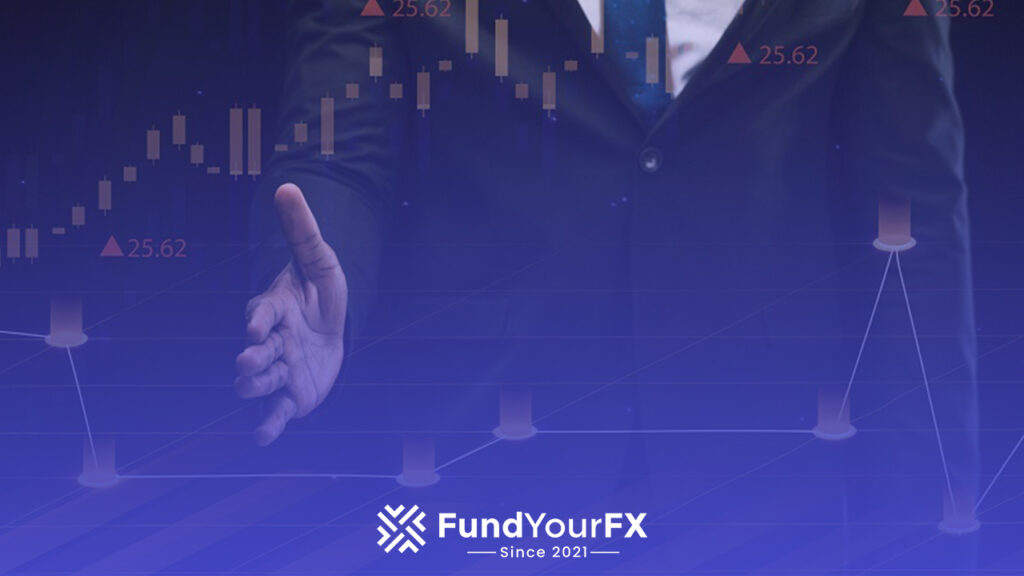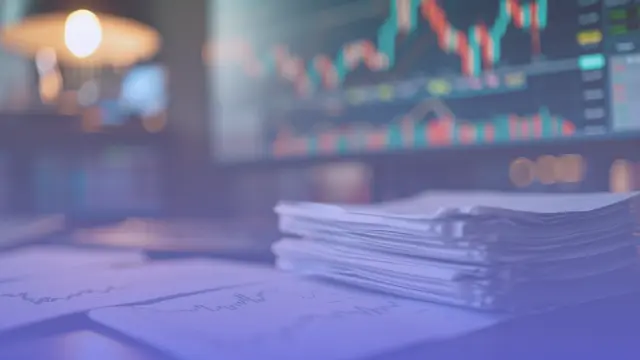Forex paper trading is a practical way to learn Forex trading skills without putting your own money at stake. By using virtual funds along with live market prices, you can practice buying and selling currency pairs, placing different order types, and testing out various risk management techniques. This kind of practice helps you get comfortable with the trading platform, and allows you to see how your strategies would perform in real-world conditions—without the stress of losing money.
Many traders use paper trading to understand how the market moves and to spot common mistakes. For instance, you might realize that you tend to enter or exit trades too quickly, or that your stop-loss orders need adjusting. These lessons are much easier (and cheaper) to learn with simulated trades.
Before switching to a live account, it’s worth spending time with paper trading to make sure you fully understand how the process works. This step can help you build confidence and develop a routine that you can follow when you start using real money.
What is Forex Paper Trading?

Forex paper trading is the practice of simulating forex trades using virtual money rather than real funds. This method allows beginners and experienced traders alike to practice trading currencies, test strategies, and become familiar with trading platforms in a risk-free environment. By using demo accounts provided by brokers, traders can experience real market conditions without the financial risk, helping them build skills and confidence. However, while paper trading is a valuable learning tool, it doesn’t fully prepare traders for the emotional challenges of live trading with real money.
How Forex Paper Trading Works?
Getting started with forex paper trading means practicing in a simulated environment that closely matches the real foreign exchange market, but without risking your own money. Most trading platforms offer demo accounts where you receive a set amount of virtual funds—often around $10,000—to test your skills. You can buy and sell different currency pairs using live market data, which helps you understand how prices move and how trades are executed.
Paper trading gives you the chance to get familiar with chart analysis, placing orders, and managing open trades. This hands-on experience helps you build confidence and get a realistic feel for how the market works. You’ll also get to practice risk management—such as setting stop-loss and take-profit levels—without the stress of losing your own money.
Most demo accounts come with tools to track your performance. You can review past trades, spot your strengths, and notice any recurring mistakes. This feedback lets you adjust your forex paper trading strategy before you move on to real trading. For example, if you notice you’re often exiting trades too early, you can work on your patience and discipline in the demo environment.
By practicing with virtual funds, you can try out new strategies and get comfortable with the trading process. This step is important for anyone looking to trade forex seriously, as it helps you prepare for the emotional and technical challenges of live trading.
Once you feel confident in your approach and see consistent results, you can consider switching to a real account and trading with actual money.
Paper trading is also an effective way to develop trading strategies and refine your approach before risking real capital.
Key Benefits of Practicing With Virtual Funds
Practicing with virtual funds gives you a safe way to learn how a trading platform works without putting your own money at risk. You can try out different types of trades, get comfortable with charting tools, and use various analytical features, which helps you understand the platform better. For example, you can place limit and stop-loss orders or test out different indicators to see how they affect your decisions.
Using virtual funds also lets you study the markets and test your risk management strategies. You can monitor your results in real time, keeping an eye on gains and losses as if you were trading with real money. This hands-on approach helps you build good habits and sharpens your decision-making process. Practicing regularly supports consistent risk management and develops the discipline needed to succeed in the Forex market. Practicing in a demo environment also allows you to develop emotional discipline, which is crucial for maintaining rational decision-making during live trading.
Because there’s no real financial risk, you’re more likely to focus on logical strategies instead of reacting emotionally to wins or losses. Practicing in this way helps you become more confident, so when you eventually trade with real money, you’re better prepared.
Additionally, many demo trading platforms provide performance metrics and profit/loss analysis so you can objectively evaluate your strategies and adjust your approach before risking real capital.
Steps to Start Forex Paper Trading?
Practicing with virtual funds gives you a safe way to learn how forex trading works before risking real money. To get started, choose a trusted trading platform that provides a demo account. These demo accounts let you practice using live market prices and real-time order execution, so you can get a feel for how actual forex trading works.
Set up your demo account by registering and creating your profile. Take some time to get comfortable with the platform’s tools, charts, and the list of available currency pairs. For example, many traders start with popular pairs like EUR/USD or USD/JPY because of their high liquidity and tight spreads. Practicing with a variety of currency pairs also helps you understand exchange rate risk and how different market factors can impact your trades.
Once you’re familiar with the platform, try out different trading strategies. This could mean testing technical analysis, using indicators like moving averages or RSI, or experimenting with news-based trading. Always set clear rules for risk management—such as not risking more than 1% of your demo balance on a single trade—to help build good habits from the start.
Pay close attention to your reactions when you win or lose trades. Managing your emotions and sticking to your plan is just as important as understanding charts or economic news.
Keep track of each trade you make by recording your decisions and the outcomes. Many platforms offer built-in tools to review your profit and loss or analyze your trades over time.
Before moving to a real account, review your results. Ask yourself what worked and what didn’t, and make adjustments to your strategies. This practice will help you feel more confident and prepared when you start trading with real money.
It’s important to remember that demo trading lacks the emotional pressure and real-time challenges of live trading, so your results in a practice account may differ from actual trading outcomes.
Essential Features to Look for in a Trading Simulator
Choosing the right trading simulator can make a big difference in your forex paper trading experience. The best platforms offer features that mirror real market activity and give you the tools you need to learn and improve. Here’s what to look for:
Real-Time Data and Accurate Simulations
Select a simulator that uses live market prices and updates quickly. Practicing with real-time data means your trades will feel much like actual trading, helping you build skills you can use later. Platforms like MetaTrader 4 or TradingView are popular for this reason, providing up-to-the-minute market feeds.
Unlimited Practice and Customizable Settings
A good simulator should let you run as many practice sessions as you want. This way, you can try out different trading strategies without any risk. It’s also helpful if you can set the starting balance, choose different timeframes, and adjust other settings to match your learning goals.
Easy-to-Use Interface
Trading can be complicated enough, so look for a simulator with a clear and simple interface. You should be able to set up trades, review your account balance, and filter historical trades with just a few clicks.
Detailed Performance Metrics
The ability to review your trading history is important for growth. Look for platforms that break down your trades, showing profit and loss, win rates, and other key statistics. This information helps you spot strengths and weaknesses in your strategy.
Backtesting Tools for Strategy Evaluation
Strong simulators include backtesting features, which allow you to test your ideas using past market data. This helps you see how your approach would have performed before you risk real money.
Save and Reload Your Trading History
A useful feature is the option to save your simulation and return to it later. This makes it easier to track your progress, compare different strategies, and review what you’ve learned over time.
Adding a detailed trading journal while using your simulator can also accelerate your growth, as it allows you to track not only your trades but your emotions and decision-making processes for continuous improvement.
Tips for Transitioning From Paper Trading to Live Markets

After spending time practicing with paper trading, you’ll notice that trading with real money brings a whole new set of challenges. While paper trading helps you understand how the forex market works and lets you try out your strategies without any risk, live trading demands more than just technical know-how.
Real money on the line can trigger emotions and behaviors you never saw during practice sessions, so it’s important to prepare for these changes.
How to Successfully Shift to Live Forex Trading
- Start Small and Build Up Gradually
Instead of jumping in with large trades, begin with smaller positions. This approach allows you to get used to the emotional ups and downs of real markets without risking too much at once. For example, if your paper trades were at $10,000 notional value, consider starting with $1,000 when you go live.
- Keep a Detailed Trading Journal
Write down each trade you make, the reasons behind it, and how you felt during the process. Over time, this record will help you spot patterns in your decisions and emotional triggers, making it easier to improve your habits and strategies.
- Adjust Your Expectations
Trading with real money can feel very different from practicing on paper. Losses can sting more, and even small gains can make you overly confident. Understand that these feelings are normal and be patient with yourself as you adjust.
Remind yourself that every successful trader experiences losses—what matters is how you manage them.
- Stick to Your Trading Plan and Risk Rules
It’s easy to throw your plan out the window when real money is involved, especially in volatile markets. However, sticking to your predefined rules for entering and exiting trades, as well as your risk limits, is key to long-term success.
For instance, always set stop-loss orders and avoid risking more than 1-2% of your account on a single trade.
Kesimpulan
Forex paper trading gives you the chance to practice trading currencies using real-time price data, but without putting any of your own money at risk. Through this simulation, you can try out different trading strategies and fine-tune your approach to managing risk. Many online platforms, such as MetaTrader 4’s demo accounts or TradingView’s paper trading feature, provide detailed reports so you can track your trades, see what works, and spot areas where you tend to make mistakes.
This type of practice can help you build the habits and discipline needed for live forex trading, such as sticking to your plan and handling losses calmly. For example, if you find that you often move your stop-loss orders or overtrade during periods of volatility, paper trading can reveal these tendencies early—before real money is involved. Over time, this experience can make you more prepared for the emotional and strategic challenges of trading with actual funds.







